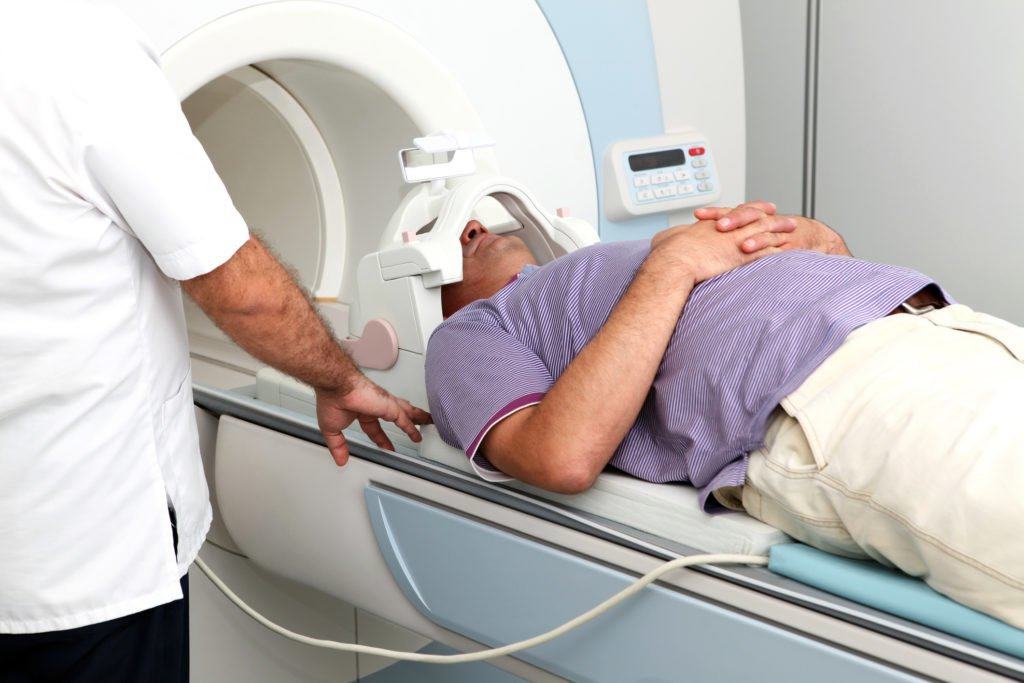Radiotherapy is a cancer therapy with the use of radioisotopes. Radiotherapy utilizes ionizing radiation such as X-rays, gamma radiation or high-energy electrons to kill as many cancer cells as possible with the least negative effect on the surrounding healthy tissue. External radiation is radiotherapy using radiation sources from outside the patient’s body. The patient is in a seated or lying position, and the source of external ionizing radiation is directed to a particular body part. External radiation can be done by using the Linear Accelerator (LINAC) or Cobalt-60 machines. LINAC emits photons or electrons with an energy of 6 MeV or 10 MeV.
The working principle of LINAC is to accelerate electrons so that the kinetic energy increases from 4 MeV to 25 MeV. In LINAC, electrons are accelerated to follow a straight path in a special structure called Accelerating waveguide. LINAC is currently equipped with several choices of radiation: electron and photon beams. The control system on photons and electrons produced by LINAC uses a computer, a body scanning system using the Electronic Portal Imaging Device (EPID), regulating radiation doses using the Multi Leaf Collimator (MLC) and setting the dosage fully using intensity modulation. Treatment Planning System Technology(TPS) on LINAC uses 3D calculations with MLC system, which can produce precise shapes in the radiation treatment to target volume. TPS or radiation planning systems are all processes for determining the design of angular geometry, radiation energy, number of radiation fields, immobility and dosimetry of patients to be given in the radiation treatment.
3 Dimensional Conformal Radiotherapy Technology (3 DCRT) can increase the number of the radiation field and the shape of the MLC that can be applied to the target by protecting normal tissue. The dose output from LINAC is in the form of a Monitor Unit (MU) which is equivalent to cGy. The amount of MU depends on the amount of dose that will be given, the depth of cancer, the calibration of monitor, the size of the collimator settings, the field size and other variables.
Therapy with LINAC is done by maximizing the dose distribution in cervical cancer and minimizing the dose distribution in surrounding healthy organs, bladder and rectum. Bladder and rectum are critical organs around the cervix at risk for radiation, also known as Organ at Risk(OAR). The effective dose is a radiation dose that considers tissue weight factors which are subject to radiation and radiation weighting factors from various radiation sources. Each radiation source has a different radiation weighting factors. Radiation will also have different effects on different tissues. Giving excessive doses to OAR will cause damage to its constituent tissue. Each OAR has a tolerance dose depending on the sensitivity of the tissue making up the organ. Accuracy of dose determination is necessary for therapy using LINAC.
The Groupe Europen de Curiethérapie and the European Society for Radiotherapy & Oncology (GEC-ESTRO ) recommended a reference point for determining OAR doses, on bladder and rectum. Acute side effects of radiation therapy on the bladder are inflammation, mucositis, interstitial fibrosis, and contractures while for the rectum include bleeding, tenesmus, urgency, and diarrhea (Billingham et al ., 2009). Therefore, the radiation dose of bladder and rectum may not exceed the dose tolerance. Separate consideration is needed in the next action for OAR dosage. The dose of the bladder and rectum can be evaluated by looking at both dose in the Dose Volume Histogram (DVH) bladder and the 2cc rectum (D2cc).
Author: Suryani Dyah Astuti
Details of this research available at:





